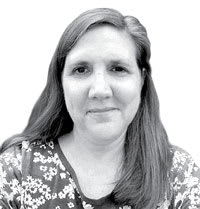Breakthroughs in multimodal imaging, functional testing, genetic testing, and management strategies have placed both the identification and management of inherited retinal diseases (IRDs) in the optometrist’s wheelhouse. This is the message of this month’s cover feature, “Digging in to Inherited Retinal Disease,”

A Population on the Rise
In 2023, the most recent data, the overall prevalence of IRDs in the United States was 106 per 100,000 people, close to twice as much as in 2016, according to a recent study in the American Journal of Ophthalmology.1For those readers thinking, “So what? IRDs are still rare,” I’d like to point out a common idiom used in eye care: “It’s not rare if it’s in your chair.” And, in fact, Dr. Legge, who practices in Wyomissing, Pennsylvania, has managed a few IRD patients.

Practice Growth
Multimodal imaging, such as optical coherence tomography (OCT), and functional testing, such as full-field electroretinography, are billable services, and so are follow-up appointments for monitoring IRD progression and assessing progressive difficulties with vision. Further, IRD patients can often benefit from low-vision services, a specialty at which optometrists excel.
In Dr. Legge’s article, she discusses the case of a 60-year-old-male patient who presented with a diagnosis of dry age-related macular degeneration (AMD) and a desire to capitalize on his remaining vision. Thanks to her keen assessment of this patient and a referral for genetic testing, the true identity of the patient’s diagnosis was revealed (an IRD), enabling him to obtain management strategies that have had a profound effect on his quality of life. My point: It’s no secret that patients happy with their doctors are likely to refer both friends and family to them for their own eye care needs. Such word-of-mouth referrals translate to the opportunity to help other patients, which grows a practice.
More Retina Content
In addition to Dr. Legge’s article, this issue also covers the latest AMD diagnostic devices and how to explain their value to patients, how to identify geographic atrophy biomarkers, and online exclusives, such as “Educating Patients on AMD Modifiable Risk Factors.” I’d love your input, so please leave me a message at speak-to.us/kol. I’d also love to meet you in person at this year’s Optometric Management Symposium (omconference.com), taking place November 13-16 at Disney's Yacht & Beach Club, in Orlando, Florida. Walt Disney is quoted as saying, “When you’re curious, you find lots of interesting things to do.” I have no doubt that this year’s lineup of speakers will satisfy your curiosity. OM
1. Abbass NJ, Yazji I, Allan KC, Kaelber DC, Talcott KE, Singh RP. Trends and disparities in the incidence and prevalence of inherited retinal diseases in the United States. Am J Ophthalmol. Published online July 22, 2025. doi:10.1016/j.ajo.2025.07.021.



